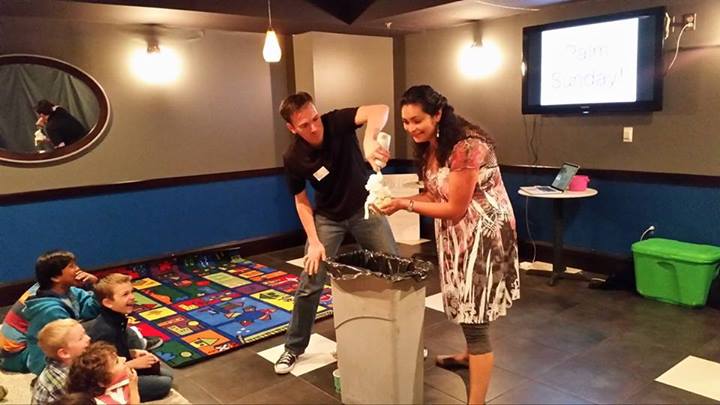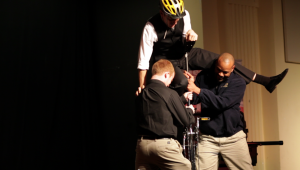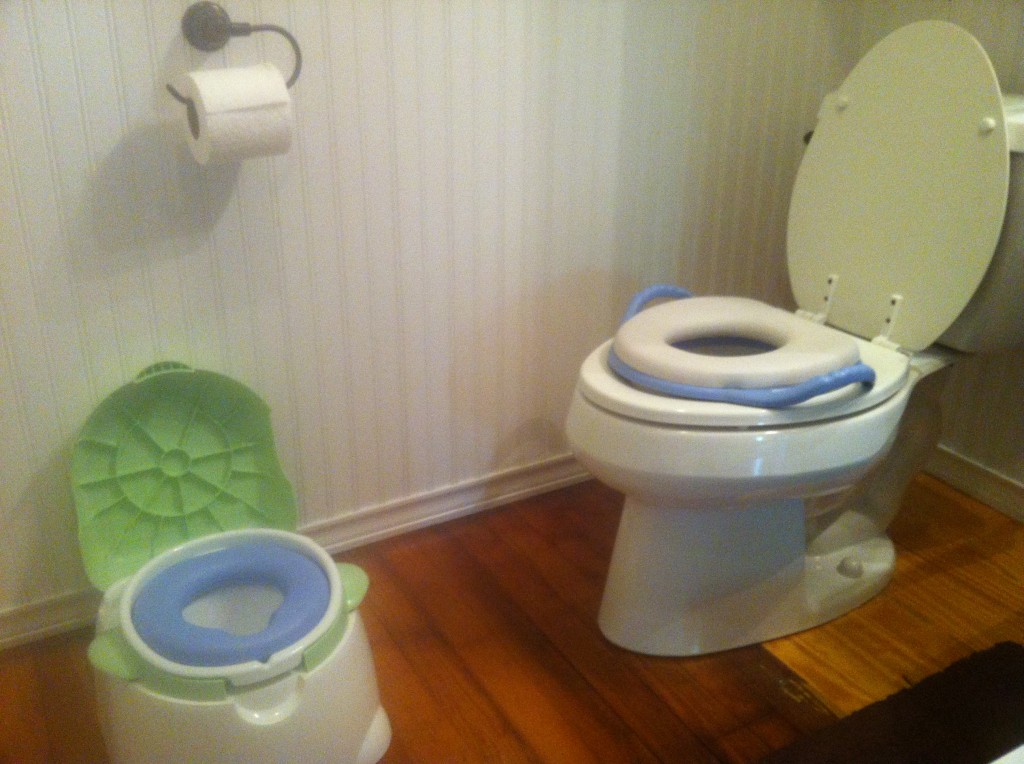
Here is a brief activity you can use on Palm Sunday in your Children’s Church service. It is designed to be humorous and then lead into teaching the kids the real meaning of Palm Sunday.
Title: “Palm Sunday”
Scripture: John 12:12-15 NIV
“The next day the great crowd that had come for the Feast heard that Jesus was on his way to Jerusalem. They took palm branches and went out to meet him, shouting, “Hosanna!” “Blessed is he who comes in the name of the Lord!” “Blessed is the King of Israel!” Jesus found a young donkey and sat upon it, as it is written, “Do not be afraid, O Daughter of Zion; see, your king is coming, seated on a donkey’s colt.”
Supplies:
-
Ingredients for an ice cream sundae and a serving spoon. No bowl necessary!
-
A large trash bag or tarp (a large trash can will work too).
-
(optional) a palm branch.
Summary: You will energetically create an ice cream sundae in the open palms of another person (either another teacher/volunteer or a brave kid with clean hands). You are so thrilled that today is Palm Sunday and you tell the kids that Palm Sunday is the day you get to make an ice cream sundae in your friend’s palms and then eat it. Finally, a “wise person” (another teacher) interrupts you after your shenanigans and advises that Palm Sunday is not about ice cream in palms; it’s about worshipping the Lord Jesus Christ as King. You then proceed to teach the kids about the real story and meaning of Palm Sunday.
Preparation: Gather ingredients for an ice cream sundae. You can be as simple or as elaborate as you like. At least get the ice cream, some chocolate syrup, and some whipped cream. But if you want to go all out, get cherries, sprinkles, a banana, and anything else you like on sundaes. Avoid any nuts or peanut butter products since there may be a child with a nut allergy.
If you can get your hands on a palm branch, whether real or fake, that will help when you get to the real meaning of the story. Have the palm branch hidden from view.
Call up a volunteer (either an adult or a brave child) and tell them to hold out their palms over your trash bag/tarp/trash can (just something to catch dripping ingredients). Tell them to hold together their palms facing up…..
Presentation: With all your energy, tell the kids that you can’t wait for Palm Sunday every year because you get to make an ice cream sundae in your friend’s palms. “That’s what it’s all about kids, right?!” Some will try to interrupt you and correct you, but just keep talking and start making that ice cream sundae. Have fun with it and describe each step as you go. Use your spoon to scoop out some ice cream, then add some syrup, then all your other ingredients. If your friend starts complaining about cold hands, tell them it’s time to eat the sundae! They have to eat the sundae right out of their open palms. The kids will love it!
Finally, a wiser person interrupts you after you’ve milked the moment for all its worth. This other teacher will open up the Bible and read John 12:12-15 to you and explain that Palm Sunday has nothing to do with ice cream. It has everything to do with Jesus as King.*
Proceed to teach a lesson about the real meaning of Palm Sunday, using your Palm Branch as a visual aid. Back then, palms symbolized victory and the fact that Jesus came in on a donkey showed that he was a humble King. Now, we can celebrate Jesus as the one who conquered death and as the King who reigns forever.
*Sources for historical background:
Pat Alexander and David Alexander, Zondervan Handbook to the Bible (Grand Rapids: Zondervan, 1999), 634.
L.A. Losie, “Triumphal Entry,” in Dictionary of Jesus and the Gospels, eds Joel B. Green, Scot McKnight, I. Howard Marshall (Downers Grove: Intervarsity Press, 1992), 859.





